In the article Mapping Twitter Topic Networks: From Polarized Crowds to Community Clusters, Smith and his colleagues observed and concluded six structures of network types based on the conversations on Twitter. However, what is the factor causes the different shape of the network communities? Infomediation, vertical integration or other factors? This passage will offer one view of the question above by using two examples of Twitter network maps.
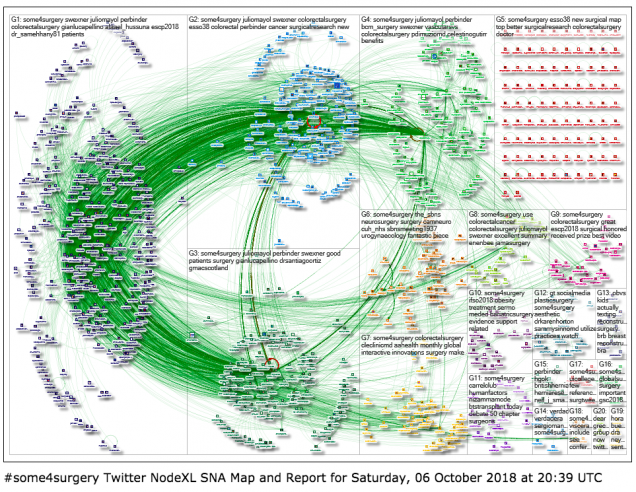
The first graph (#some4surgery hashtag) I found matches the archetype of tight crowd network communities. The #some4surgery is used by the group of people who want to discuss the perioperative mistakes. It attracts experts from the surgical field or someone who has interests in healthcare. It focuses on the topics of surgery, collaborative practice and surgical research. As we can see from the graph above, people who use the #some4surgery hashtag have relatively multiple and robust connections with each other since there are many arrows in the graph which shows the strong connection. In contrast to the fewer circles in the map which shows the isolation in the conversation under the topic. (The data set is available from: https://nodexlgraphgallery.org/Pages/Graph.aspx?graphID=170516)
The graph represents a network of 973 Twitter users whose recent tweets contained “#some4surgery” or who were replied to or mentioned in those tweets. This is a tight crowd network structure because people are highly interconnected with others and fewer isolated participants. Under the topic #some4surgery, people discuss how to learn from perioperative mistakes, stances of medical and public towards mistakes and support needed by patients and surgeons. From this network map, we can see that the network communities can give specific groups of people a place to discuss professional issues and give support to people who have the same problems and obstacles.
The most frequent use of words in the largest groups in this network map is displayed below. As we can see, top words in the different group share many similarities. Some4surgery, swexner, juliomayol all showed in the list of top words in each group. The common use of content across these groups suggests that these networks are divided by small differences in social relationships and topic interest rather than major divisions. These groups are lobes of a common group rather than separate disconnected entities (Smith,etl 2014). Besides, juliomayol, perbinder and swexner is the name of the top influencers among the community. These people play a leading role in the conversation of #some4surgery. Their strengths make the community bigger and bigger. 
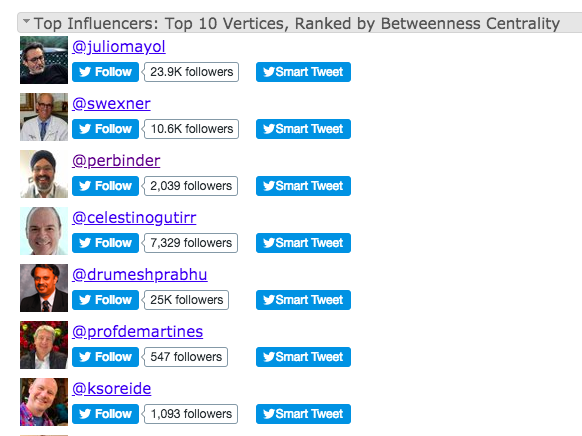
The second network map I found is an example of community clusters. People tweeted about #DayoftheGirl. The map is shown below. These data can be found at: https://nodexlgraphgallery.org/Pages/Graph.aspx?graphID=171257.
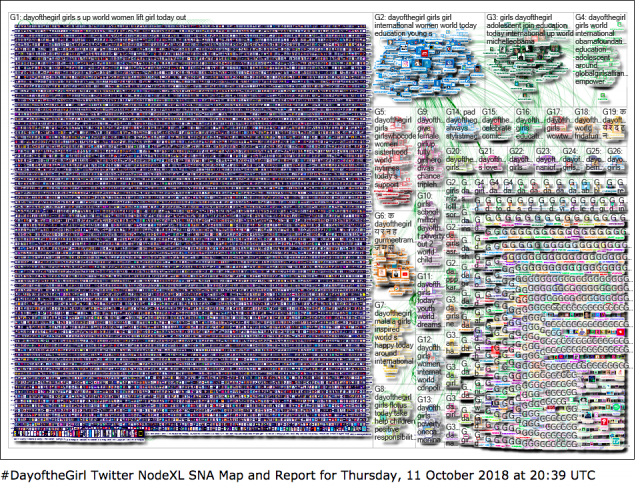
The people tweeting in the groups in a Community Clusters network share a common topic but often have a very different focus (Smith, et al 2014). In these groups, people both talk about the girls. But their focuses are different. Some groups discuss the power of girls and encourage girls around the world; some groups talk about the international day of the girl. Others pay attention to the education of girls. So this can be an example of the type of community clusters.
As we can see below, even though most of the people on the topic are isolated. But there still is overlap among the groups and they have a modest level of connection with some other groups. It shows some similarities among these groups.
The hashtag #DayoftheGirl attracts 18602 tweeter users to take part in. And the top influencers we can see below have some interesting features. The top 10 vertices are made up by official organizations (like @un women, @obamafoundation) and female users (like @michelleobama, @malala). And they are the pioneers among the field. And most of them have relatively high social awareness and authority.
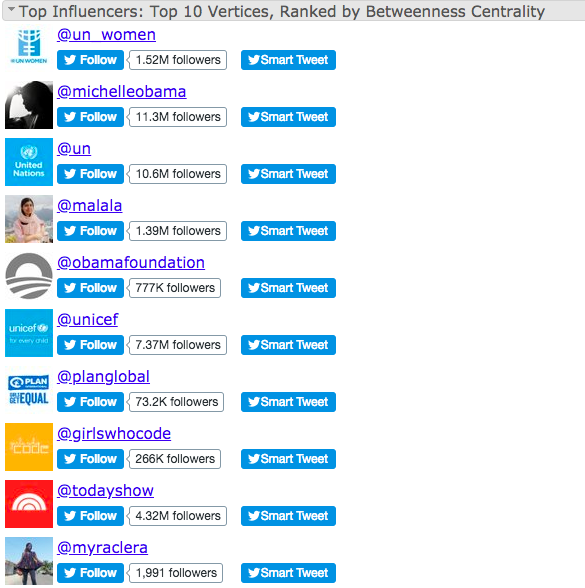
Affordances are relational properties; they are neither in the environment nor in the perceiver, but are derived from the ecological relationship between the perceiver and the perceived so that the perceiver and perceived are logically interdependent (Kaufmann & Clément, 2007). So we can see that affordance is the bridge of perceiver and perceived. Therefore, from my perspective social affordance of networks are being engaged in these two cases. Hashtags, Reply-to and mention someone, these functions twitter offered all serve as the properties of social affordance. These social affordances allow users to be aware of other users’ opinions, thoughts and feedback and, in so doing, help to engage users and build social connections (Kavanaugh et al, 2012). Therefore, social affordance of Twitter help people shapes and creates their different network communities.
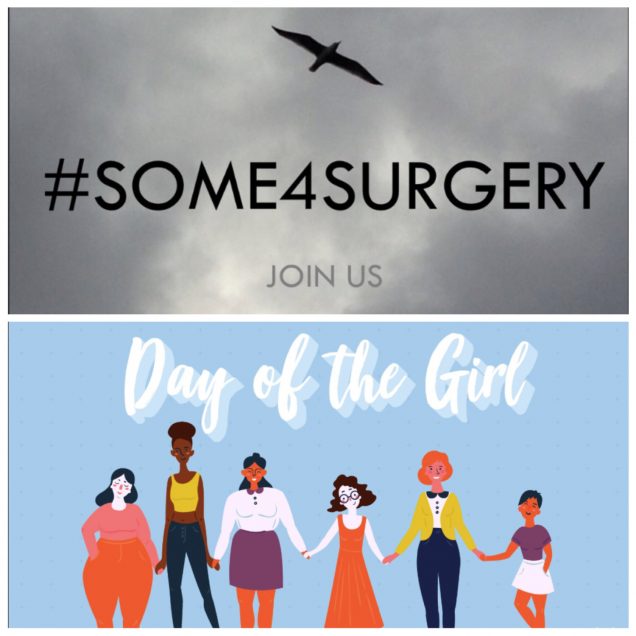
Through these examples of group network structures in twitter, I realized that the informediation and vertical integration indeed shapes network types to some extent. The main objective of the oligopoly is to control infomediation, defined as the set of socio-technical mechanisms such as software, services and infrastructures that provide internet users with all types of information online and connect them with other users (Smyrnaios, 2018). Yes, by using social platforms like Twitter or Facebook, people can get every information they want, not only news but also specific events or group discussion. The reason why Twitter is so “encyclopedic” is that it takes part in the vertical integration and it is the oligarch of the industry. In the book Internet Oligopoly, Vertical integration is defined as bringing together a complementary set of business activities that constitute a production chain under the same decision-making power. Twitter offers the platform for message transmission and topic discussion and then it controls infomediation by giving individual or organization a most convenient way to produce information aggregated in an editorialized form. So as I mentioned above, the official organizations, celebrities and even ordinary people can take advantage of the platform Twitter and play a role of infomediation to transmit messages. Anyone with an internet connection and a bit of digital literacy can create online content that has the potential to reach a wide audience (Rainie & Wellman, 2012). As Smith et al said in the article, key users occupy strategic locations in these networks, in positions like hubs and bridges (Smith et al, 2014). The influencers create or lead the conversations in the network and they are in the central position within one group or they have links across group boundaries. Their role of infomediation shapes the network types to some degree. Besides, infomediation infrastructure includes operating systems, consumer electronics, telecommunications networks and data centres (Smyrnaios, 2018). Twitter integrates these parts of infomediation, so vertical integration also plays a role in shaping network types.
However, does informediation and vertical integration is the only factors that shape the network types? My answer is no. From the examples we discussed above, we can see that the reason why the two different topics have different network types is that they have different kind of contents. The first one, #some4surgery is a professional topic about perioperative mistakes. It attracts relative people in this field to discuss with each other, so it forms a tight crowd. On the contrary, the topic of #DayoftheGirl, because the topic is broad, it can be used to celebrate the day of girls, discusses the education of girls, or encourage the power of girls. So the different contents of the topic help to shape this kind of network type: community clusters.
In summary, informediation and vertical integration shape the network types indeed. However, they are not the only factors. The contents under the topic, influencers who lead the topic and individuals who talk about the topic all help to shape the network types.
Reference:
Rainie, Lee., Wellman, Barry. (2012). Networked: The New Social Operating System. The MIT Press. Cambridge, Massachusetts.
Smyrnaios, N. (2018). Internet Oligopoly: The Corporate Takeover of our Digital World. Bingley, United Kingdom: Emerald Publishing.
Smyrnaios, N. (2012). How does news infomediation operate online? The examples of Google and Facebook. World Media Economics & Management Conference. May 23–27, Thessaloniki, Greece.
Kaufmann and F., Clément. (2007) “How Culture Comes to Mind: From Social Affordances to Cultural Analogies,” Intellectica, vol. 2, p7.
Kavanaugh, S. Gad, S. Neidig, M. A. Pérez-quiñones, J. Tedesco, and V. Tech. (2012) (Hyper) local News Aggregation: Designing for Social Affordances. 13th Annual International Conference on Digital Government Research, pp. 1–10.